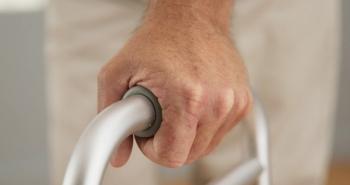
Strength and Stamina: Patients With OSA Benefit From Combined Exercise Regimens
Resistance training plus aerobic exercise had the greatest impact on patients' obstructive sleep apnea (OSA).
Following a structured exercise regimen that combines both aerobic and resistance activity can help patients with
“It has been observed that patients with OSA do not perform physical exercise, and the presence of this disease is lower in those who regularly practice physical exercise,” the authors write, pointing to previous studies linking obesity with OSA. As physical activity decreases individual risk for obesity, exercise interventions—whether the patient has obesity or not—could prove fruitful for those seeking out additional tactics for managing their condition.
The present authors primarily used the apnea-hypopnea index (AHI) to evaluate the impact of physical activity and sport on individual OSA. The AHI is a reliable, validated tool for quantifying OSA severity, deriving metrics by dividing the frequency of apneas by the total minutes spent sleeping—and then multiplying that number by 60. There are 3 apneas people can experience:
- OSA: this apnea is the most prevalent type of sleep apnea; relaxed muscles in the back of one’s throat effectively narrow the airway, sometimes closing it; snoring is a common manifestation.
- Central sleep apnea (CSA): a dysfunction stemming from the brain and the lack of proper signals being sent to one’s breathing muscles; during sleep, breathing may pause for a bit or be very shallow; CSA can result from certain types of medication, neuromuscular conditions, as well as events including stroke or heart failure.
- Mixed sleep apnea: as the name suggests, this condition is a combination of the previous 2 apneas.2
An international systematic literature review and meta-analysis was conducted, surveying the Web of Sciences, Scopus, Cochrane, and PubMed databases, including studies published all up until March of 2024. Any case series of studies, editorials, or systematic literature reviews were excluded from the analysis.1
In total, 16 articles were eligible for inclusion, all of which were randomized clinical trials (RCT).
Quantitative analysis found that aerobic exercise alone did not significantly benefit patients with OSA (P = .015), with an average AHI difference of 0.77 (95% CI, -1.16 to 2.7); however, a combination of aerobic and resistance training was significantly beneficial (-5.31; 95% CI, -8.43 to -2.18; P < .01) compared with controls. The measured impact on AHI between the aerobic alone and combination groups was also statistically significant (P = .001).
While the authors acknowledge that their findings suggest a reciprocal relationship between physical activity/sport and OSA, they admit that, despite these results, there is still not enough evidence to make more concrete conclusions here. They concluded by adding, “Although it is not the main subject of this study, there are other factors that jointly influence the results of physical activity and apnea-hypopnea rates, such as muscle mass index, oxygen saturation, heart rate, respiratory pressure, and diet, among others.”
As research progresses in this area, the authors advocate that future studies consider these listed factors, as well as the influence that fluid retention, body mass index, or other lifestyle adjustments can have on OSA outcomes.
References
1. Martínez Revuelta L, Flores-Fraile J, Zubizarreta-Macho Á, Montiel-Company JM, Lobo-Galindo AB, Arrieta Blanco P. Relationship between obstructive sleep apnea and sports-systematic review and meta-analysis. J Clin Med. 2024;13(22):6814. doi:10.3390/jcm13226814
2. 3 types of sleep apnea you should know – Murray Schools Family Dental. Murray Scholls Family Dental. February 20 2023. Accessed December 5, 2024. https://www.murrayschollsfamilydental.com/3-types-of-sleep-apnea-you-should-know-murray-scholls-family-dental/#:~:text=There%20are%20three%20types%20of,sleep%20apnea%20can%20cause%20snoring
Newsletter
Stay ahead of policy, cost, and value—subscribe to AJMC for expert insights at the intersection of clinical care and health economics.







































